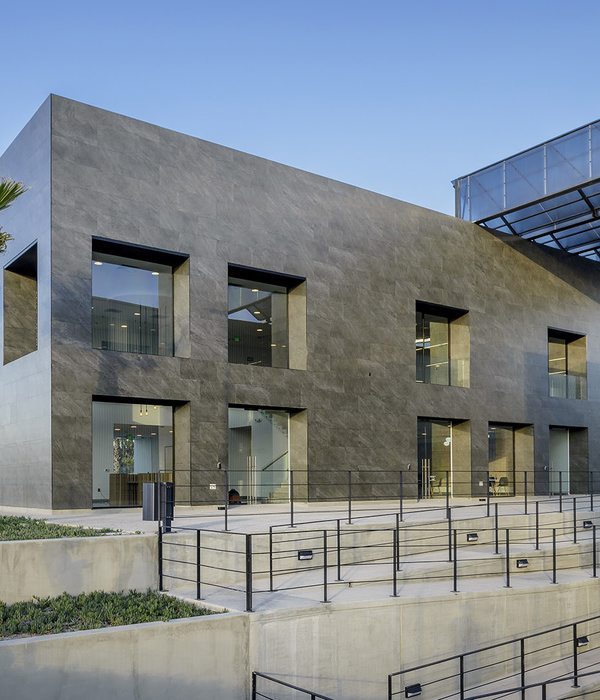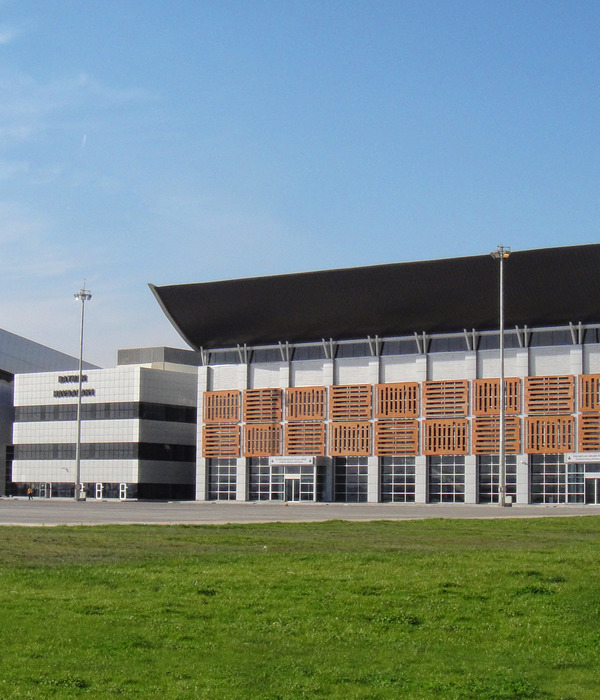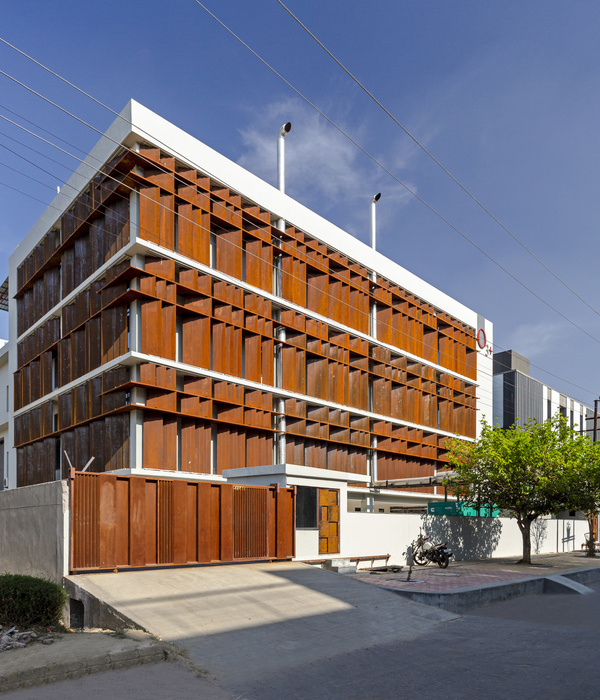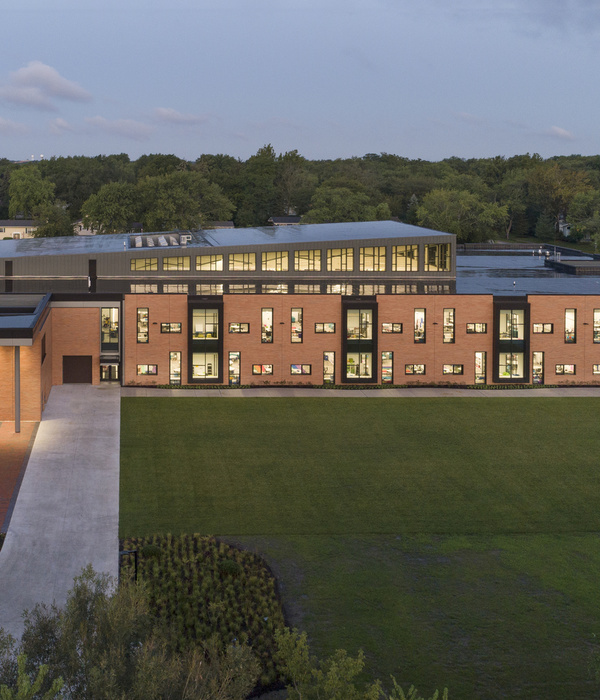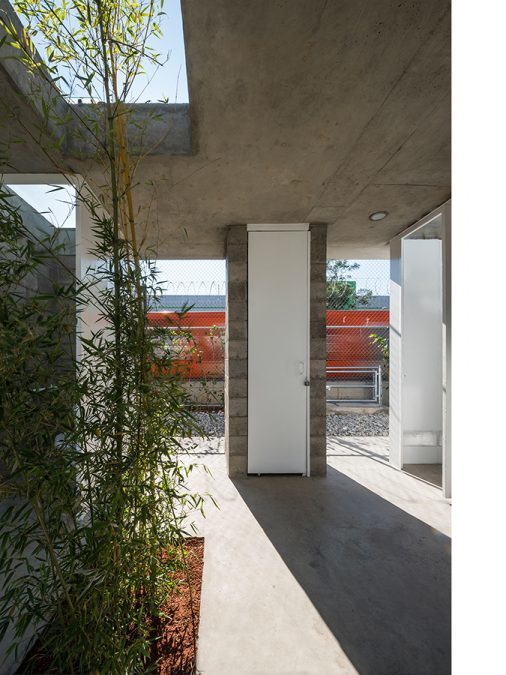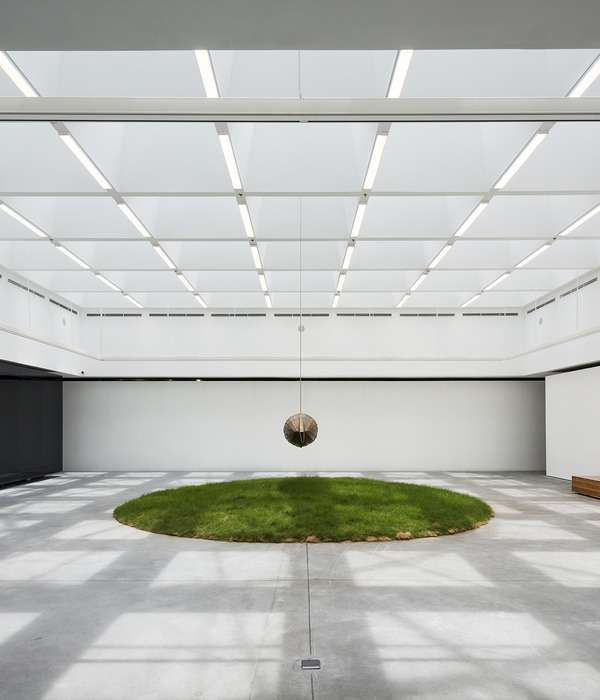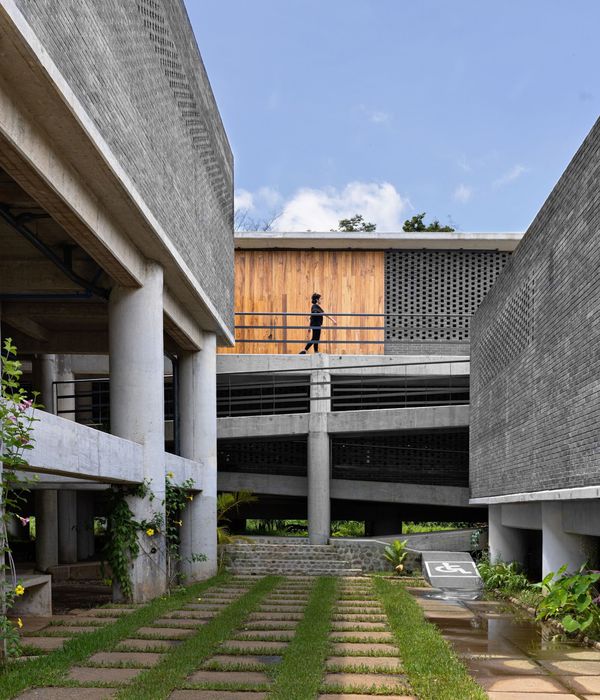© Alireza Behpour
(Alireza Behpour)
建筑师提供的文字说明。该博物馆打算展示伊朗医学科学的丰富历史遗产和伊朗科学家在这一领域的能力。其中包括伊朗草药展览、历史医学对象、介绍伊朗历史健康和医学专家以及其他相关信息和物体。
Text description provided by the architects. This museum intends to exhibit the rich historical heritage of Iranian medicine science and the capabilities of Iranian scientists of this field. These include the exhibition of Iranian herbs, historical medical objects, introducing the historical Iranian health and medicine specialists, and other related information and objects.
© Alireza Behpour
(Alireza Behpour)
波斯花园可以追溯到至少2500年前,它是一个建筑概念,多年来一直在波斯文化中强烈地生活着。在一个博物馆里,它往往展示伊朗医学的成就,通过另一种语言和表达来使用这个概念是一种合乎逻辑的选择。博物馆里的一切,甚至是设计本身,都是为了展示伊朗医学史的遗产。
Dating back to at least 2500 years, Persian Garden is an architectural concept, which has lived strongly within Persian culture for ages. In a museum, which tends to exhibit the achievements of Iranian medicine science, using this concept through another language and expression is a logical option. Everything in the museum, even the design itself, is in service of presenting the heritage of Iranian medicine history.
© Alireza Behpour
(Alireza Behpour)
该博物馆的设计是为了举办几个部分,如伊朗医学和医学史的历史时间表,伊朗药剂师和医生的小型祈祷,波斯“气味”的房间,草药展览,伊朗药剂师和医生的荣誉,以及伊朗的医疗中心和医院的历史。
The museum is designed to host several sections, such as the historical timeline of Iran Medicine and Medical History, the small-scaled objets of Iranian pharmacists and physicians, the room of Persian “scents”, herbs exhibition, the hisotiry of Iranian Pharmacists and physicians, and the history of medical centers and hospitals in Iran.
在波斯花园里,亭是最重要的,也是唯一的建筑。他们对周围的景色了如指掌,这使他们能够将花园的自然质量带入建筑物,在伊朗炎热干燥的气候中提供通风和凉风,甚至还能从游泳池或花园小溪中获得水。这些摊位接待最重要的人,如国王或富人,在某些情况下,如伊斯法罕的哈希特·贝赫特,他们是一个向应邀的外国客人和商人致敬的地方,博物馆花园的基奥斯克也是如此。这个Kiosk的一部分是为了主持与受邀客人的重要会议,让他们在愉快的气氛中享受他们的工作会议。
Kiosks were the most important and mainly the only building in Persian Gardens. They had panoramic views to the surroundings, which allowed them to bring the natural quality of the garden into the building, providing ventilation and cool breeze in the hot and dry climate of Iran, and even the water from the pools or the streams of the garden. These kiosks hosted the most important people, such as Kings or rich people, and in some cases, such as Hasht Behesht in Isfahan, they were a place to honor the invited foreign guests and merchants; and so does the Kiosk of the Museum Garden. Part of this Kiosk is designed to host important meetings with the invited guests, allowing them to enjoy their work sessions in a delightful atmosphere.
© Alireza Behpour
(Alireza Behpour)
Safavid建筑杰作,如Sheykh Lotfollah清真寺或Shah Abbas Jame‘h清真寺,就像被倒在一碗瓷砖里一样。从色彩丰富的角度来看,这个时代的瓷砖是伊朗瓷砖的高端。Kiosk建筑的瓷砖属于一个著名的杰作,在伊斯法罕的Sheykh Lotfollah清真寺。他们与项目的绿色植物和谐相处,并与黄色、红色和天鹅绒的花朵对话。它们被用于花园的中心和入口处,在花园最重要的建筑和集中的中心,为花园的主要部分和最重要的部分增加了一个培利字符。此外,在入口处使用这些瓷砖是一种当代的方法,这与大多数历史上的“私人”波斯花园不同,它邀请所有公共用户进入其内部丰富多彩的世界。
The Safavid architectural masterpieces, such as Sheykh Lotfollah mosque or Shah Abbas Jame’h mosque, are as if they are poured in a bowl of tiles. The tiles in this era, from a viewpoint of color richness, are a high end in Iranian tiles. The tiles of the Kiosk building belong to a famous masterpiece, Sheykh Lotfollah mosque in Isfahan. They are in a harmony with the greenery of the project, and in a dialogue with the yellow, red and velvet of the flowers. They are used in the center and the entrance of the garden, in its most important building and the focused center of it, adding a pearley character to the main and the most important parts of the garden. Besides, using these tiles in the entrance wall is a contemporary approach, which –in contrast to most of historical “private” Persian gardens- invites all the public users to its inner colorful world.
© Alireza Behpour
(Alireza Behpour)
波斯园林的概念也体现在伊朗人的其他文化方面,甚至在日常生活中也是如此,包括伊朗地毯和地毯及其图案。波斯园林、雪松和生命之树的示意图和秩序就是其中的一些表现。我们在外墙面板中使用了这些对自然元素的抽象解释,因此,带有网格几何学和抽象自然表达的地毯在博物馆的地板上通过光和影的诗意游戏重新创造出来。
The concept of Persian garden is also represented in other cultural aspects of Iranians, even in the everyday life including the Iranian carpets and rugs and their motifs. The schematic plan and order of Persian garden, cedar, and the tree of life are some of these representations. We have used these abstract interpretations of natural elements in the exterior wall panels, so, the carpets with their grid geometry and abstract natural expressions are re-created on the floor of the museum through a poetic play of light and shadow.
© Alireza Behpour
(Alireza Behpour)
产品描述:主亭的手工瓷砖属于萨法维德时代在伊斯法罕的一座非常著名的建筑,名为Sheykh Lotfollah清真寺。有了这些五颜六色的瓷砖,这个亭就像波斯花园中央的一颗珍珠一样闪闪发光。
Product Description. Handmade tiles of the main kiosk belong to a very famous building in Isfahan from Safavid era named Sheykh Lotfollah mosque. With these colorful tiles, the kiosk shines like a pearl in the center of the Persian garden.
© Alireza Behpour
(Alireza Behpour)
Architects Modaam Architects
Location Kordan, Alborz Province, Iran
Category Museum
Architect in Charge Sanaz Ghaemmaghami, Mojtaba M.Zaheri
Area 2500.0 m2
Project Year 2016
Manufacturers Loading...
{{item.text_origin}}


